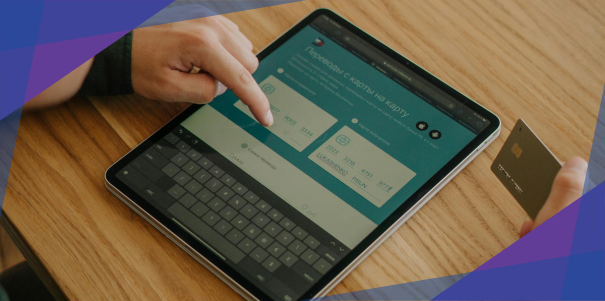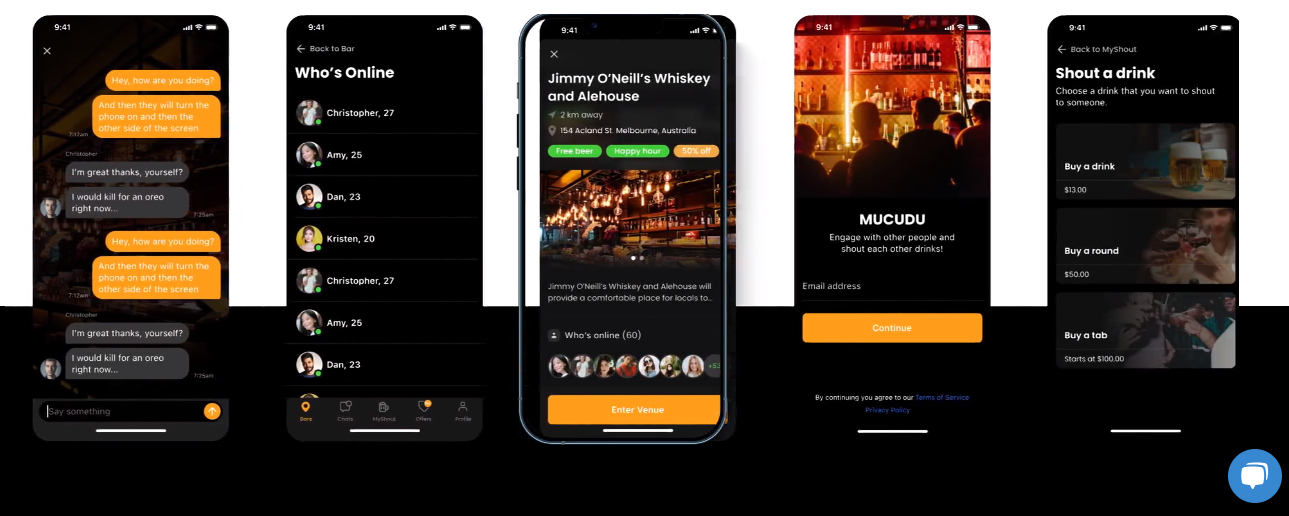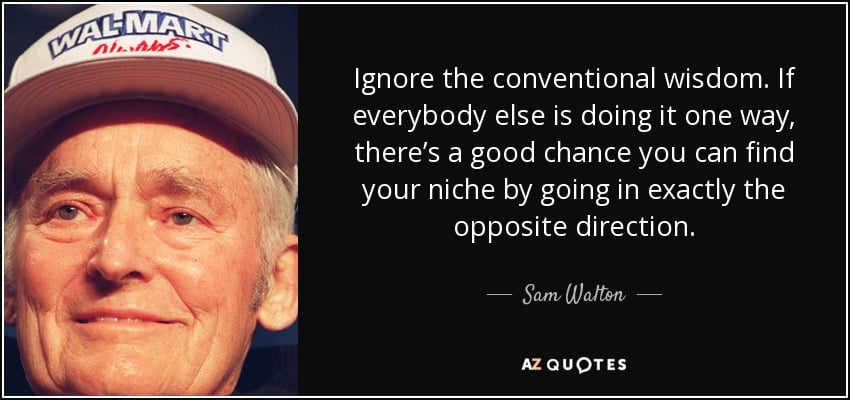How to Build a Marketplace App that Can Become the Next eBay

Building your own marketplace app is like setting up your own public market or shopping mall.
But just like everything, there are pros and cons to doing this.
Though global retail e-commerce sales amounted to around $6 trillion in 2023, developing a marketplace app can be challenging, especially considering the dominance of Amazon and eBay in the space.
But it’s easy to forget that many tech giants were once small startups. What made the difference for them was having a solid strategy that led to their success.
This article offers this sort of robust strategy, albeit with our own original insights gathered from many years of growing startups and multinationals.
Read on to learn more about (click any bullet point below to go straight to that section):
- Basic information about marketplace apps
- Why success is still possible in the high-competition world of marketplace apps
- A cost-effective and end-to-end strategy on how to build a marketplace app for long-term success
- How to manage legal risks
- The technical aspect of creating a mobile marketplace app
Let’s dig in!
What is a marketplace app?
A marketplace app is a type of software that allows multiple businesses or providers to offer their products and services online to different buyers. This type of application is different from an e-commerce app, where only one seller or business provides for the needs of many customers.
For illustrative purposes, imagine that an e-commerce app is a shoe store owned by one person, while a marketplace app is more like a mall or bazaar. No matter how big the shoe store gets, it has just one owner or seller. The mall and bazaar can accommodate many owners of shops or stalls.
Ultimately, what sets marketplace apps apart is their capacity to empower multiple sellers and buyers to connect and exchange value online.
It’s important to note that both products and services are available in marketplace apps.
For example, while Amazon sells a wide range of products, Fiverr is a platform where freelance workers can offer their skills and time to multiple potential clients. Despite the differences in their offerings, both are marketplace apps.
Now that the basics are out of the way, it’s time to size up your chances of building a successful marketplace app.
Is it feasible to build a marketplace app?
It is feasible to build a marketplace app, especially if you learn to find your niche, outsource some of the app design and development work, and build with an MVP mindset. MVP stands for minimum viable product, or a basic version of your marketplace app that helps you launch quickly at the least possible expense. The latter section of this article discusses these three main points that make building a marketplace app feasible.
Despite the challenges of the online marketplace business model, such as the existence of rival apps and lack of technical knowledge, the following innovative marketplace apps have shown that success is possible despite the existence of industry giants like eBay, Amazon, Fiverr, and Airbnb.
Some marketplace apps that have beaten the odds
Praisal
There are dozens of real estate apps in the market. Despite this, Praisal has found a way to revolutionize the way people get value from the real estate market. Through this innovative marketplace app, buyers can reach out to owners and make initial bids even before properties go to market.
The app aims to foster a win-win situation for both buyers and owners through award-winning web app development and sound business values like transparency.

MUCUDU
Entrepreneurs Zenita and James have extensive experience in the hospitality industry but have no experience with programming. And yet, the duo was able to leverage the power of an industry-leading app agency to create MUCUDU, the app connecting bars and venues to their patrons.
Zenita and James were able to build this marketplace platform even in the wake of the 2020 COVID-19 pandemic. Their story is a testament to the power of will, passion, vision, and collaboration in overcoming the challenges of setting up an app business.

The 6 Proven Steps to Build a Successful Marketplace App
Step 1: Find your niche

Source: AZ QUOTES
Sam Walton believed in finding one’s niche to succeed. With his idea and leadership, he grew Walmart from a rural grocery store in a lesser known town to the retail giant that it is today.
Like Walton, we highly recommend finding your niche to eventually build sustainable growth for your marketplace app.
The trick in building successful apps is to find that small corner of the Earth where your marketplace app can be of service. You don’t have to exactly copy what eBay or Amazon has done (but you can learn from them to get insights that fit your goals and circumstances).
Basically, you find your niche by examining the market closest to your physical location and create a marketplace app tailored to that demographic. Engage with your community, whether it’s your neighborhood, local sports teams, schools, colleagues, or interest groups. Listen to their feedback on existing marketplace apps—are there pain points or desired features? What products or services are they most in need of?
In addition to understanding your target audience, research both your local and global competitors to get some insights. This approach will help you craft a marketplace app that meets the specific needs of your users while staying competitive in the market.
Ultimately, the proverbial mustard seed can grow into a 30-foot tree. Nurture whatever seemingly small ideas and insights you got from your market and competitors. Carry that information carefully into the next stage, which is surveying the legal landscape.
Step 2: Conduct research on your potential market’s legal landscape
Where would most of your customers be based? What laws and regulations are in effect there?
These are the questions that you should address in Step 2. The best way to navigate the legal landscape is to do the following:
- Prioritize user data and privacy. Compliance with data protection laws such as GDPR (Europe) and CCPA (California) is vital to handle user data responsibly, preventing hefty fines. Additionally, ensuring data security through adherence to best practices and breach notification laws is paramount.
- Address content and intellectual property concerns. This involves implementing measures to detect and eliminate copyright infringement on their platform and ensuring sellers do not violate trademarks owned by others. You must also ensure you know how to patent your app idea to ensure your marketplace app will not be copied and lead to proceedings you could have avoided had you made your app harder to replicate.
- Craft clear and equitable Terms of Service and user agreements. These documents should transparently delineate expectations for both buyers and sellers, including provisions for dispute resolution, in language understandable to all parties involved.
- Develop awareness of consumer protection laws. You may bear some responsibility for faulty products sold on your marketplace app. Learn about and adhere to regulations governing product liability, false advertising, and other related concerns.
Understanding the legal landscape is vital for several reasons. It helps you avoid costly litigation, fosters user trust by safeguarding their rights and privacy, and ensures the longevity of your app business by staying updated on evolving legal standards.
Ultimately, by acquainting yourself with these legal considerations, marketplace app developers can create a secure and reputable platform conducive to business success. Seeking guidance from a technology law specialist is advisable for tailored legal advice in specific circumstances.
Step 3: Outline the features of your MVP
Once you’ve pinpointed a market need, assessed your competitors, and explored the legal landscape, it’s time to map out the core version of your marketplace app, known as the MVP (Minimum Viable Product).
The MVP represents the basic version of your app, containing only the essential features needed for its initial success. This version should include just enough vital functions to attract early users and gauge demand for your product.

Source: Syntech Software
Mapping out your MVP helps distinguish between features necessary for the basic version and those that are more advanced and better suited for later stages of your app’s development.
It’s crucial to note that the MVP approach isn’t about cutting corners or delivering a half-baked product. Even the basic version of your marketplace app in the MVP stage should be considered a finalized product, although it’s designed to be flexible to adapt to user feedback. Explore our article on MVP examples and strategies to understand how MVPs differ from traditional products.
The succeeding sections will discuss the basic features your MVP marketplace app should have and the advanced features you can add later once your app gains traction.
Basic features commonly found in marketplace apps
Our team of app developers considers the following features indispensable, even for a basic version of a marketplace application:
For buyers
- User registration. Buyers are empowered to establish accounts containing personal details. To instill confidence in users during the registration process, it’s crucial to prioritize the security and responsibility of handling this information. Ensuring that your marketplace app maintains a high standard of security is essential for fostering user trust.
- Search and filtering. A search bar allows buyers to input keywords or phrases relevant to their desired purchase. Additionally, filters enable users to refine their search results based on criteria such as price, location, category, and seller rating.
- Product or service listing. Sellers can effortlessly create listings that are readily accessible to potential buyers. Each listing should include a comprehensive card featuring detailed information about the item or service being offered.
- Order tracking. A system that enables buyers to monitor the status of their orders, including shipping and delivery details. This information can be easily accessed using a unique tracking number provided by the seller or shipping carrier. Alternatively, integrate order tracking directly within the app to streamline the user experience.
- Reviews and ratings. Mechanisms for buyers to provide feedback on products or services they’ve purchased, as well as their overall experience with the seller. Incorporating a review and rating system helps foster transparency and trust within the marketplace community.
- Payment processing. A secure payment system that facilitates transactions between buyers and sellers, while also allowing the marketplace to collect fees. Leveraging a payment gateway is essential for securely processing online transactions, providing merchants with the capability to accept and manage payments made over the Internet.
- Messaging and communication. A messaging feature to facilitate communication between buyers and sellers. This functionality allows buyers to inquire about products or services, while sellers can respond promptly, fostering stronger relationships and delivering a more personalized shopping experience.
For sellers
- Seller profile. Each seller will have a dedicated profile page showcasing their business name, contact details, customer ratings, and reviews, along with other pertinent information.
- Data analytics and reporting. Robust mobile analytics tools to monitor and analyze various aspects of shop activity, including sales metrics, website traffic, and user interactions. These systems empower sellers and administrators with actionable insights to optimize business performance.
- Inventory and order management. A streamlined system facilitates order tracking, inventory management, and payment processing for sellers. This system enables sellers to effortlessly monitor their sales and inventory levels, automatically updating available stock as orders are placed or fulfilled.
- Comprehensive customer support. A system for providing assistance to buyers and sellers, encompassing features like a help center, live chat support, and email assistance.
Advanced features of typical marketplace apps
On the other hand, you may consider building the features listed below once your marketplace app has amassed a sufficiently loyal and large user base to ensure sustainable growth:
- Social media integration. Utilizing social media platforms such as Instagram for ecommerce integration via an API presents a seamless way to incorporate your shop directly into users’ feeds, streamlining the shopping experience.
- Integration of voice recognition. The rising prominence of voice recognition technology caters to users with visual impairments or mobility challenges, ensuring a user-friendly experience. Incorporating this feature into the search engine, product pages, and shopping cart enhances accessibility and user satisfaction.
- Integration of augmented reality. Integrating augmented reality features into your marketplace app empowers sellers to let their buyers try out products virtually, as Sephora and IKEA customers do. This immersive experience enhances customer engagement across various product categories, helping your marketplace app attract more businesses and customers.
- Enhanced search capabilities. Expanding search functionalities by incorporating tools commonly found in web applications, such as image search, autocomplete, or machine learning algorithms, amplifies user engagement and boosts sales revenue.
Now that you have learned how to outline the features for your MVP, it’s time to delve into the design phase of your marketplace application.
Step 4: Design your app
Design is one of the lesser-known phases in app development. But designing your marketplace app before delving into coding ensures your app’s enduring success.
If we liken your marketplace application to a house, a prototype functions much like an architectural blueprint. It doesn’t represent the final product yet; rather, it offers a glimpse into the layout and visual aesthetics of your product. As we’ll soon discover, having a prototype not only helps in cost-saving but also enhances prospects for attracting investments.
Our designers produce two types of outputs to come up with design prototypes. These are sketches and wireframes.
Sketching
Sketching entails utilizing digital tools to draft rough design illustrations that capture our clients’ product concepts and the primary features of the apps being developed. This phase enables us to explore various design concepts, layouts, and user pathways before proceeding with coding or programming.
Our specialists have noted that requirements often undergo changes once development commences. Making necessary adjustments during the sketching phase can streamline the process and minimize expenses. After all, it’s much simpler and more economical to modify sketches than to rewrite the underlying code of a marketplace app.
Moreover, sketches facilitate transparent communication between designers and developers, ensuring a shared understanding of the app’s design and functionalities.
Once the sketch receives approval, it serves as a basis for scoping the project and estimating app development costs.
Wireframing
Wireframing follows the sketching phase. This is where we visually delineate user pathways and consider additional screens and segments for the app.
The objective of wireframing is to generate an interactive prototype for assessing functionality, user experience, and overall structure. It aids in pinpointing usability concerns and allows for refinements before full-fledged development commences.
How designs draw investments
A finely crafted prototype has the power to attract investor capital, as evidenced by the success of Good Empire. André Eikmeier, the founder, secured over $1 million from numerous investors for his social challenge app.

What attracted this large amount of confidence and financial resources? A high-caliber design prototype that effectively highlighted Good Empire’s capabilities.
The bottomline is that creating a prototype prior to development enhances your app’s chance of success while effectively managing costs. And this principle applies whether or not you have extensive coding experience.
If you seek clarity on the design stage in app development, schedule a free consultation with our team of specialists.
After completing the design phase, it’s time to embark on building your marketplace app.
Step 5: Build your marketplace app
Once you’ve got a functional and viable prototype, it’s time to transform it into a fully operational marketplace app.
Effectively constructing your app largely involves selecting the appropriate app development tools and methodologies. Once you grasp these aspects, you can either proceed with independent development, hire in-house developers, or collaborate with app agencies.
Tools
Numerous programming languages are available for marketplace mobile app development.
At Appetiser, our developers craft mobile apps for both Android and iOS platforms using Kotlin and Swift programming languages, respectively. We opt for these languages to ensure our apps remain easily updatable and future-proof.
Methodologies
Various app development methodologies exist, and choosing the most suitable one is crucial for developing the best possible app while keeping costs in check.
Our developers highly recommend the adoption of an Agile methodology called Kanban (refer to our article on software development methodologies for more insights into this approach).
In essence, Kanban revolves around the following principles:
- Visualizing work
- Limiting work in progress
- Continuously improving

Source: Bordio
Our preference for this method arises from our commitment to empowering clients, providing them control over the project and their budget.
Here’s how we implement the Kanban method:
- Initially, we categorize our clients’ MVP feature requirements into Kanban months, devising a product development roadmap.
- Next, we assemble a team to collaborate with our clients in app development. The team’s size depends on the complexity of project features and requirements.
- In line with the priorities set in the roadmap, the development team implements the necessary basic features as per the Kanban month schedule.
- We regularly engage with clients to gather feedback on the apps we develop. Our team incorporates any feedback and enhances the apps accordingly.
By partnering with us in your online marketplace app development project, our Kanban method grants you full control over the extent of development you wish to undertake each month. You can seamlessly scale up, downsize, or halt at any point without constraints.
If any features surpass the allotted time, they’re rescheduled for the subsequent month, with roadmap adjustments as necessary. Upon completing the Kanban months within the MVP scope, your app will be ready for launch.
Ideally, these tools and methodologies culminate in marketplace apps that closely align with users’ expectations. Once development concludes, you’re ready to launch your app into the market.
Step 6: Launch, promote, and expand your marketplace app
The last phase of marketplace app development is more of an ongoing process than a final destination. This implies that marketing and app enhancement should be continual to ensure you stay ahead of the competition.
Picture yourself launching your new marketplace application in the app stores. Even before this, it’s wise to engage in pre-launch marketing initiatives.
Pre-launch marketing plays a crucial role in generating excitement, piquing interest, and building anticipation for your app ahead of its official release. This approach allows you to reach a wider audience and create enthusiasm, leading to increased downloads and sign-ups once the app is available.
Consider setting up a landing page or website to encourage maximum user sign-ups for your app.
Upon app launch, effectively communicate your application’s unique value proposition by:
- Implementing app store optimization
- Applying SEO best practices to your landing page
- Leveraging social media promotion
- Utilizing other effective app marketing strategies
Post-launch, follow these steps to ensure the sustained growth and success of your marketplace app:
- Vigilantly monitor key app metrics such as acquired active users and average session duration to pinpoint areas needing improvement.
- Develop an efficient customer service strategy to address complaints and other issues. One way you can do this is through customer experience automation.
- Provide timely and relevant updates to resolve bugs and enhance the overall user experience.
- Explore innovative methods to continue promoting your app without overwhelming users with excessive marketing content.
No marketplace is too crowded
This article points to one important thing.
With the right people, tools, and strategy, you can still build an original and successful marketplace app, despite competition from established giants.
At Appetiser Apps, we have the experience and expertise to help you carve out a niche in the hotly contested world of marketplace apps. Many of our partners have found their place in the sun by working with us. You could be next.
If you’re thinking of scaling your business, or solving a problem through apps, book a free consultation with us and let’s explore alternative avenues to success.

Jesus Carmelo Arguelles, aka Mel, is a Content Marketing Specialist by profession. Though he holds a bachelor’s degree in business administration, he also took courses in fields like computer troubleshooting and data analytics. He also has a wealth of experience in content writing, marketing, education, and customer support.


